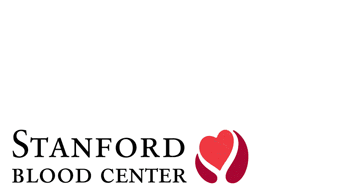Stanford to Participate in “BloodSaves” Public Education Campaign to Raise Awareness for Importance of Regular Blood Donation
2005
Attention News Desk: Press Release (for immediate release)
MEDIA CONTACT:
Michele Hyndman (650) 723-8237
mhyndman@stanford.edu
STANFORD, Calif. – The Advertising Council today announced that Stanford has been chosen as one of 16 campuses across the country to participate in “Bloodsaves,” a grassroots public education program designed to raise college students’ awareness of the importance of regular blood donation. Bloodsaves presents young adults with a simple yet strong call to action: Save a life. Donate blood.
The Bloodsaves campaign will reach young adults through traditional print and broadcast media outlets and through the online community. Additionally, throughout the spring semester, student ambassadors from 16 universities across different regions of the country, including students from Stanford, will serve as campaign spokespersons and encourage their peers to make a difference by donating blood.
The campaign will help promote three university blood drives, to be held on Monday, February 28 at Wilbur Hall from 2:00 pm to 7:30 pm and at Florence Moore from 3:30 pm to 7:30 pm, and on Tuesday, March 1 in White Plaza from 11:00 am to 4:00 pm, sponsored by the Stanford Blood Center. Stanford students who donate or attempt to donate blood at any of the three drives are eligible to enter a prize drawing to win an Apple iPod shuffle. Stanford students who donate or attempt to donate blood will also receive a special reward in the form of a coupon provided by Bed Bath & Beyond. This coupon serves as a thank you to those young donors for their community service.
Additional activities to increase awareness of blood donation and create a “buzz” on Stanford’s campus include t-shirt giveaways and free red “awareness” bracelets which will be handed out by student volunteers. These awareness-building activities complement the campaign’s television, radio, outdoor and Internet advertising, created pro bono by the New York office of Euro RSCG Worldwide. Also, bloodsaves.com, a comprehensive Web site that provides a zip code search to find out where to donate blood, provides important facts about blood, explains the blood donation process and dispels common myths associated with giving blood through an interactive quiz.
“Students today give a lot of themselves to academics, athletics and jobs,” said Mark Liao, Bloodsaves student ambassador on the Stanford campus, “But it is so easy to give to others: donating blood takes no longer than an hour and saves lives.”
Each year nearly five million Americans need a life-saving blood transfusion, and although 60 percent of the population is eligible to give blood, unfortunately only 5 percent actually donate regularly. In fact, the average adult can give blood every 56 days, or six times a year.
Katie Delderfield, a 22-year old student from University of Idaho, received multiple blood transfusions after being exposed to Benzene, a deadly chemical.
“I am forever grateful to those who gave blood when I needed it most,” said Katie Delderfield. “I’m excited to be a part of the Bloodsaves campaign and hope my story will encourage others to get out there and save someone’s life by donating blood.”
Stanford is one of 16 universities across the country adopting the message of the campaign. Other participating universities include: Arizona State University, Penn State University, Florida State University, Georgetown University, New York University, Norfolk State University, University of Southern California, Syracuse University, University of Florida, University of Minnesota, University of North Carolina Chapel Hill, University of Oklahoma, San Francisco State University, Purdue University and Washington State University.
To learn more, visit www.bloodsaves.com.
# # #
Stanford University Medical Center integrates research, medical education and patient care at its three institutions – Stanford University School of Medicine, Stanford Hospital & Clinics and Lucile Packard Children’s Hospital at Stanford. For more information, please visit the Web site of the medical center’s Office of Communication & Public Affairs at http://mednews.stanford.edu.
